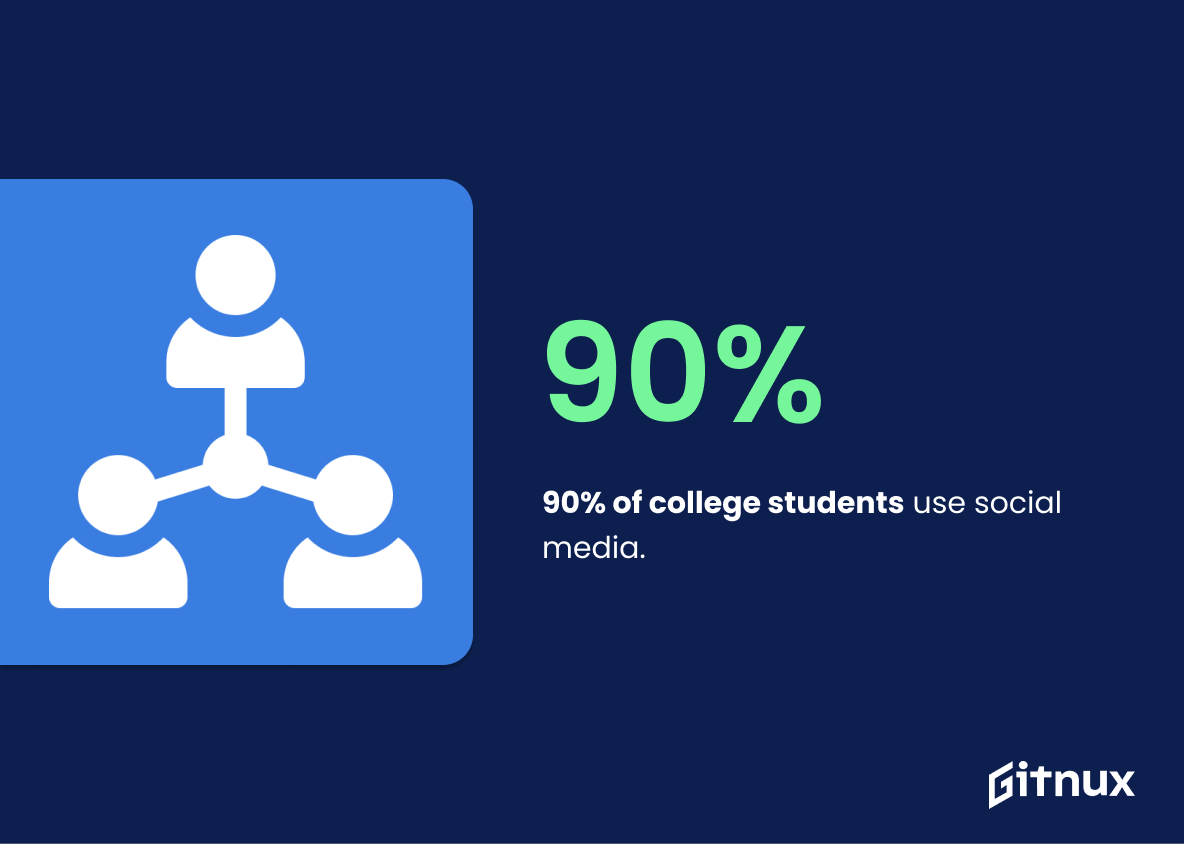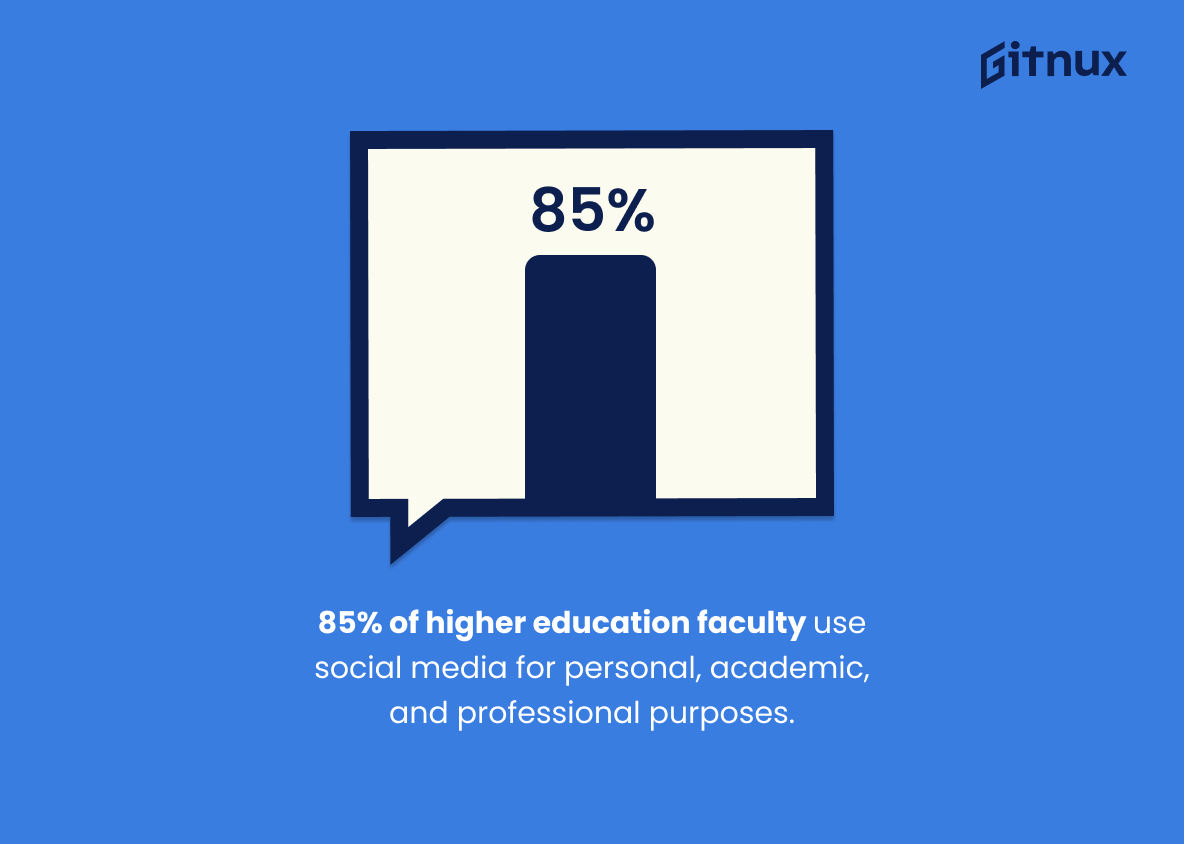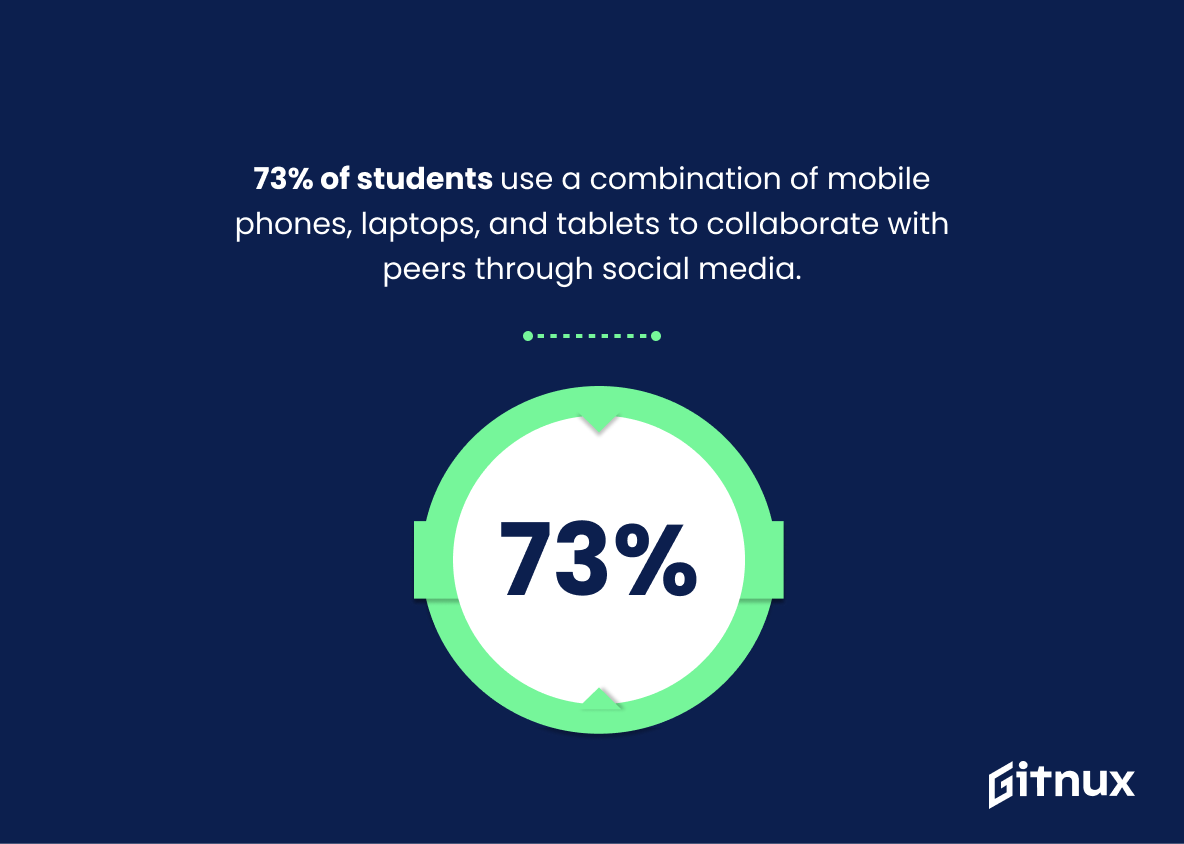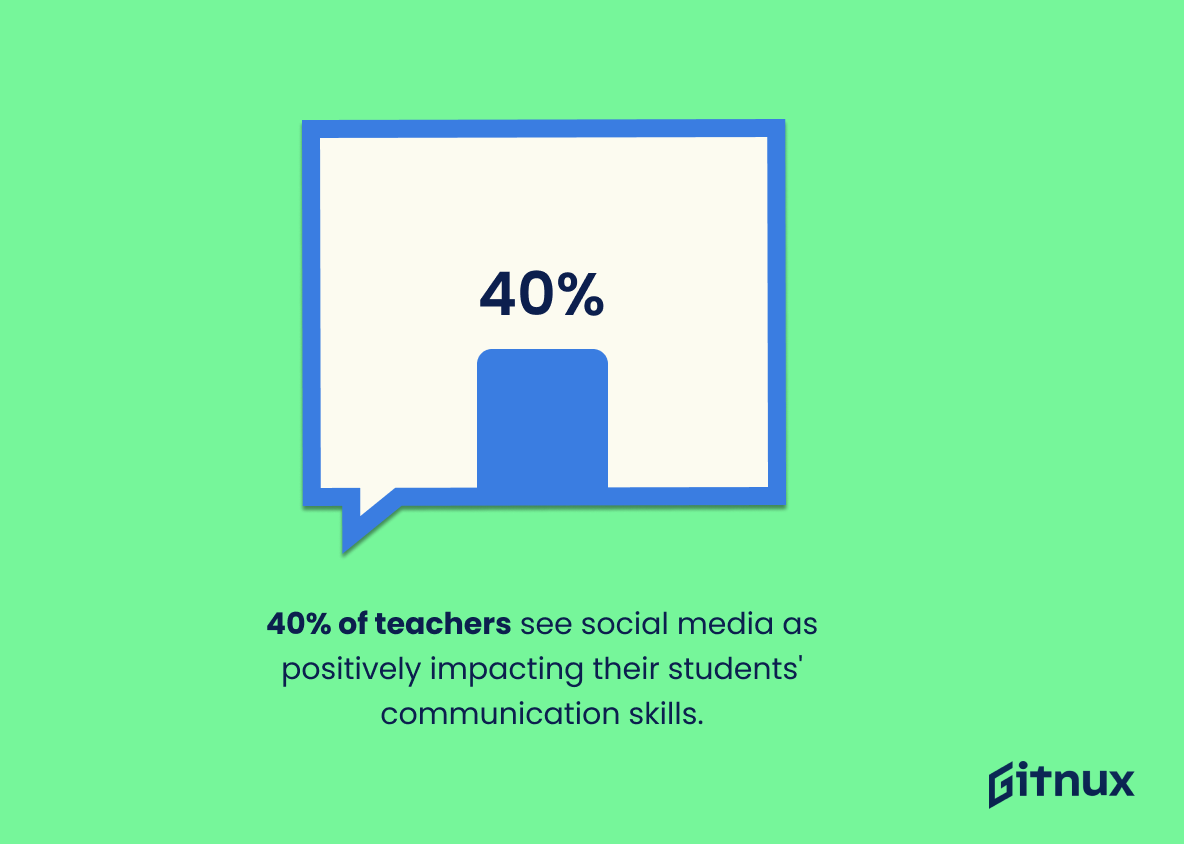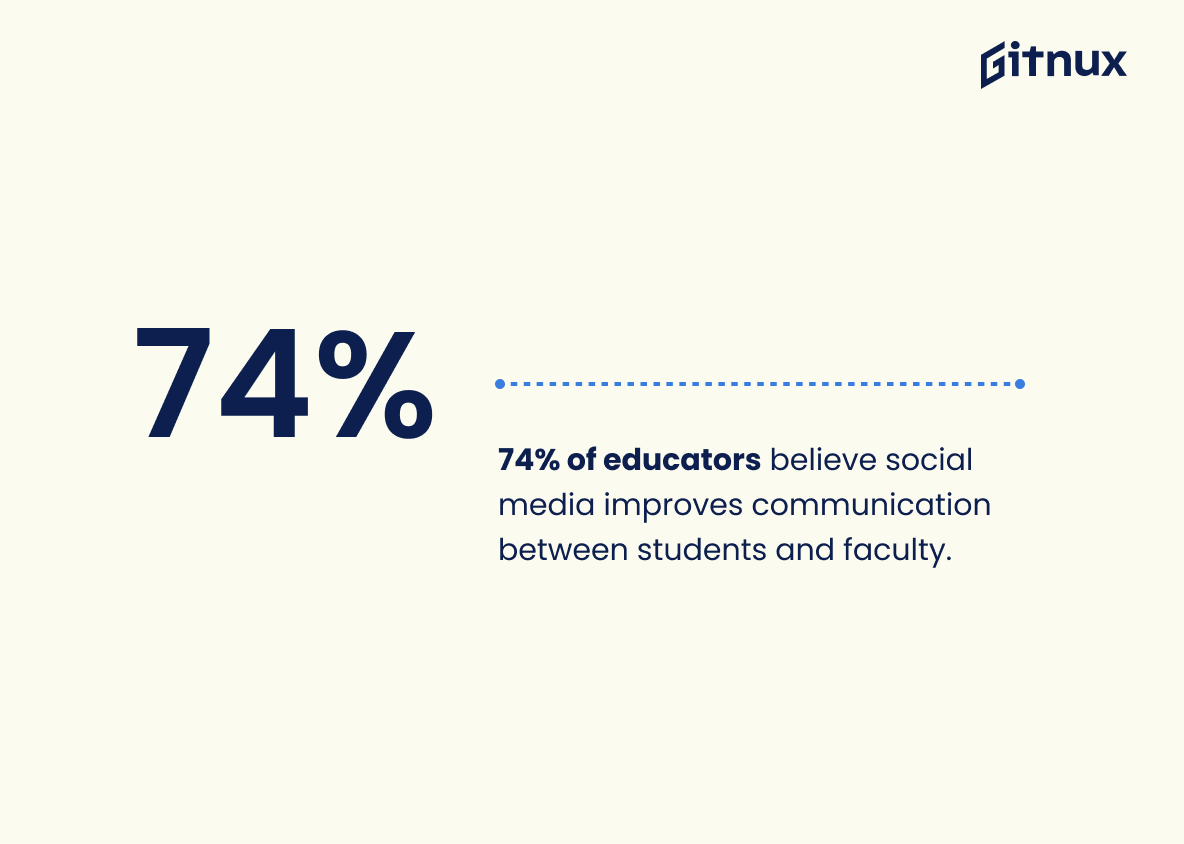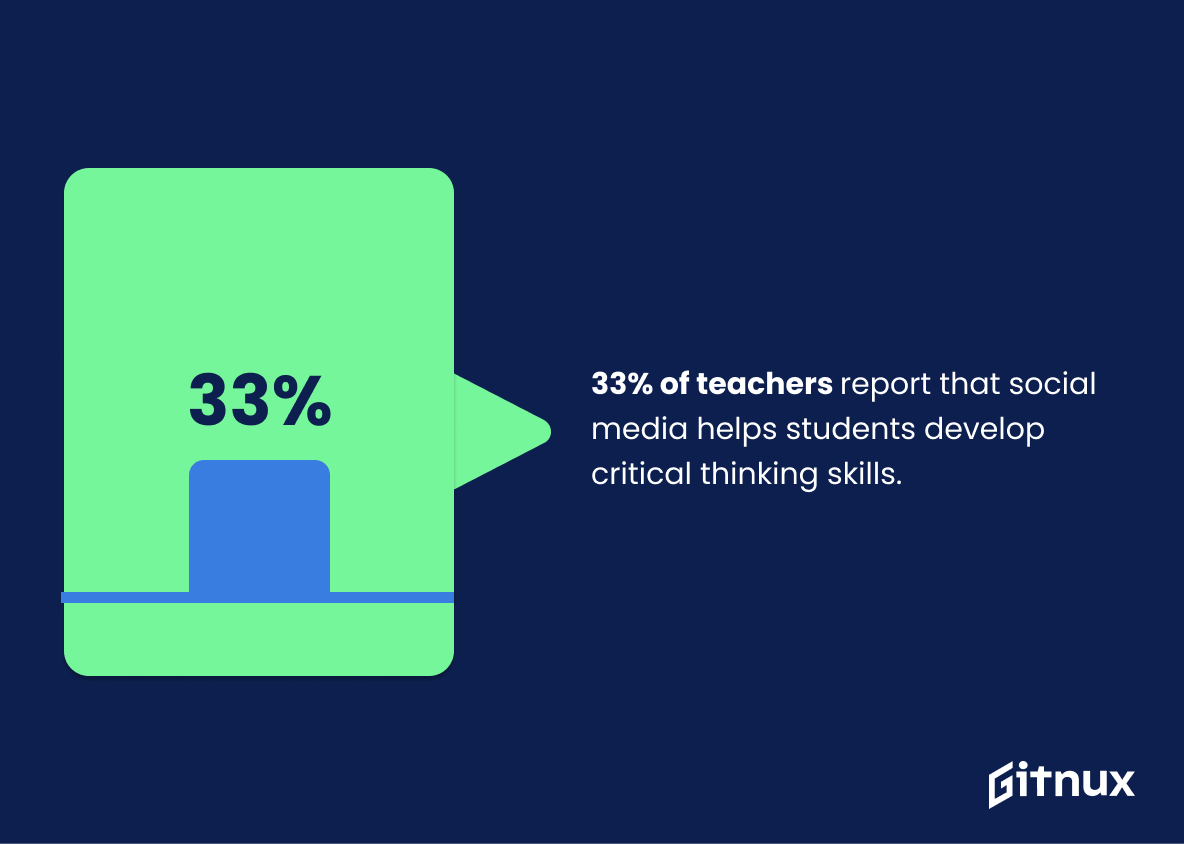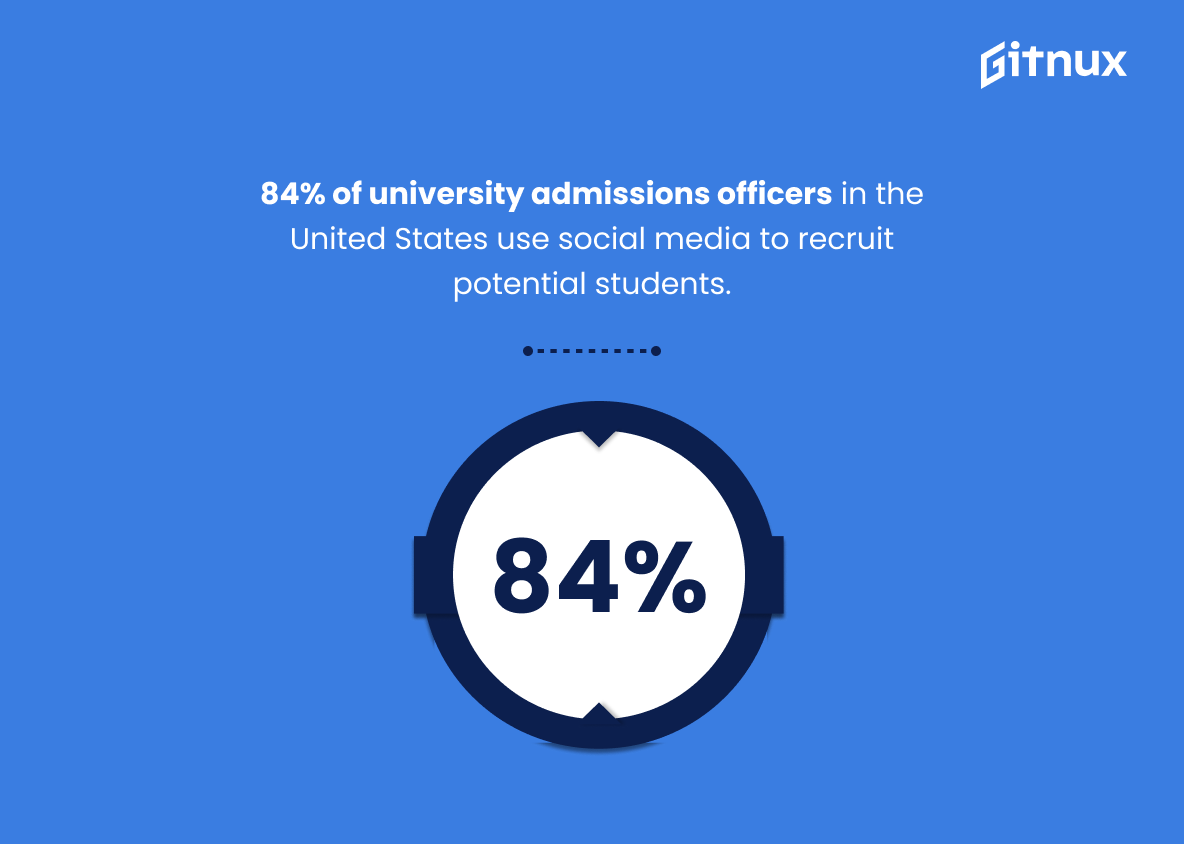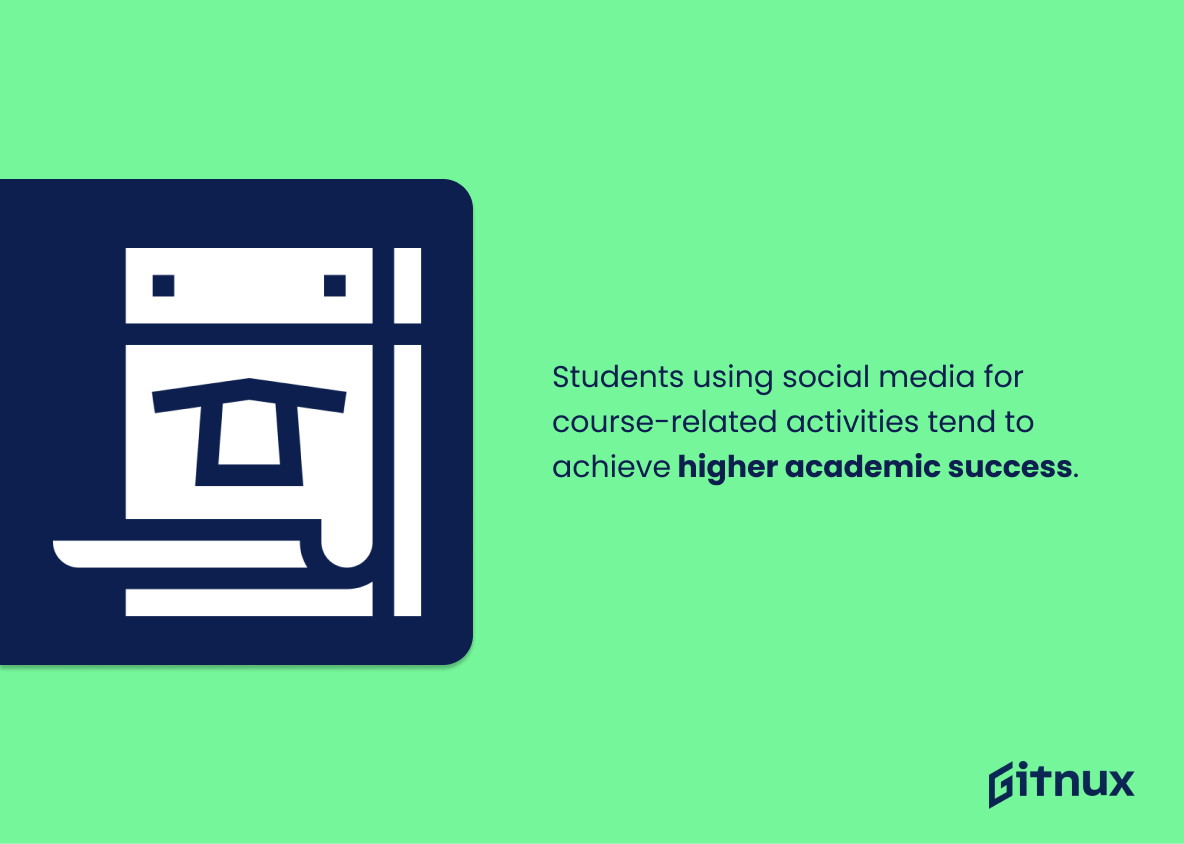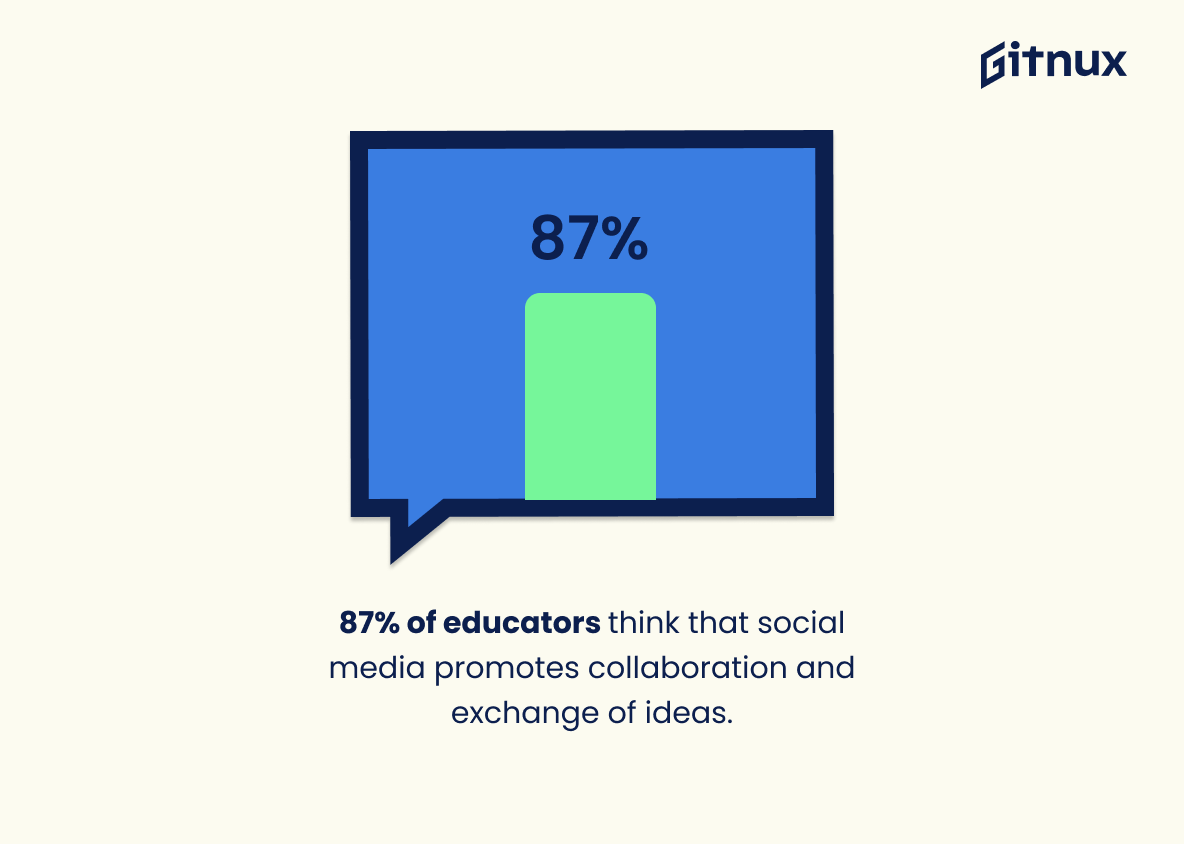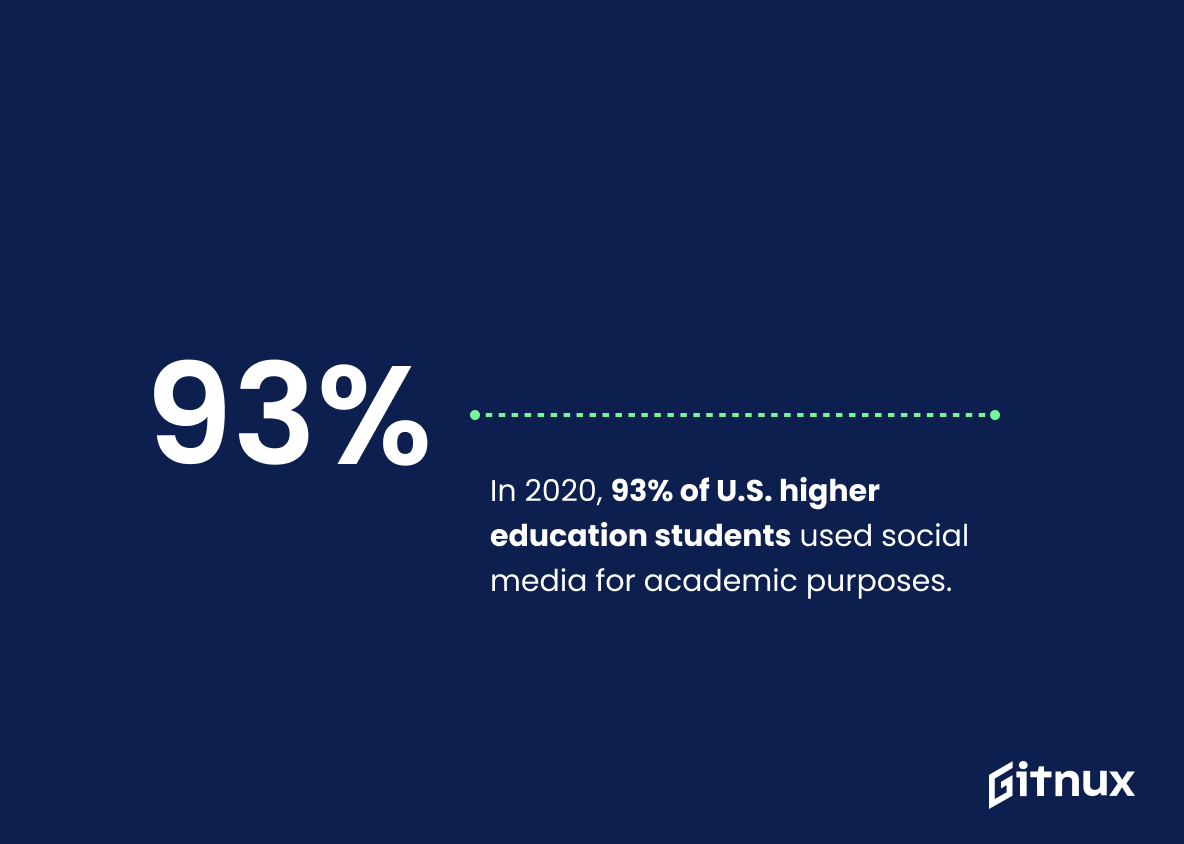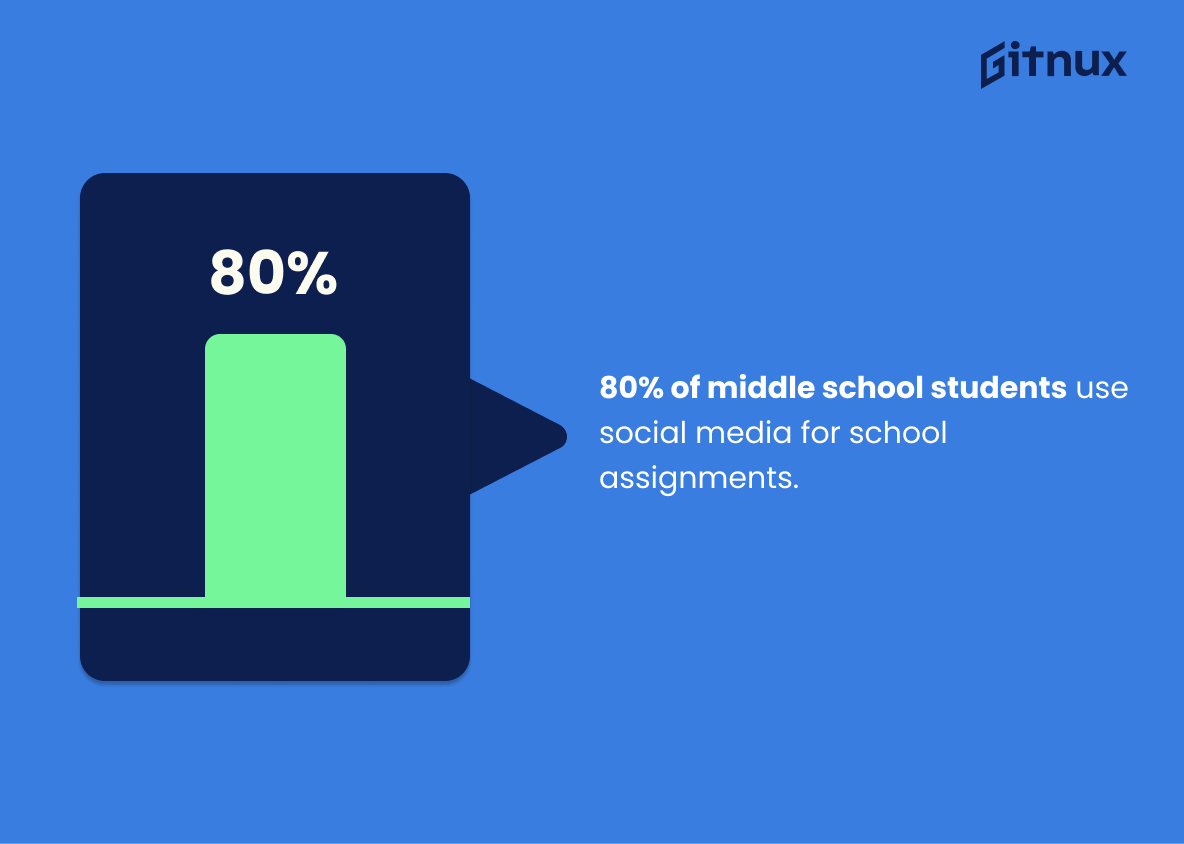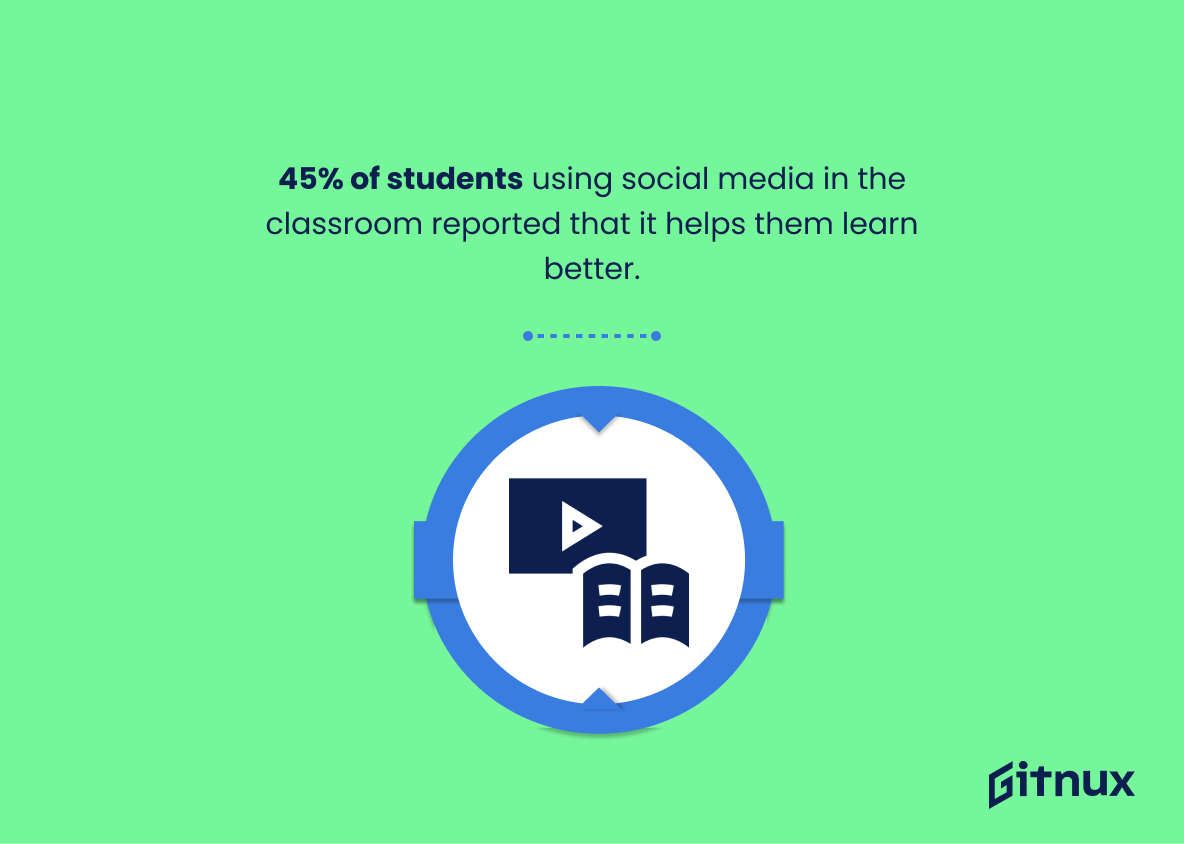Social media has become an integral part of our lives, and its use in the classroom is no exception. From college professors to middle school students, social media is being used for educational purposes more than ever before. This blog post will explore some of the most recent statistics on how teachers and students are using social media in their classrooms. We’ll look at data from surveys conducted by organizations such as EdWeek, Edutopia, Campus Technology Magazine, SmartBrief Education Group and The Tech Advocate that show us just how prevalent social media usage is among educators and learners alike. Additionally we’ll discuss research findings about the positive effects that using social networks can have on student learning outcomes like motivation levels or knowledge recall ability. Finally we’ll consider potential drawbacks associated with incorporating digital tools into traditional teaching methods so you can make informed decisions when deciding whether or not to incorporate them into your own curriculum design plans.
Social Media In The Classroom Statistics Overview
90% of college students use social media.
This statistic is significant in the context of a blog post about Social Media In The Classroom Statistics because it demonstrates the prevalence of social media usage among college students. It highlights the importance of incorporating social media into the classroom, as it is a tool that many students are already familiar with and comfortable using.
85% of higher education faculty use social media for personal, academic, and professional purposes.
This statistic is significant in the context of a blog post about Social Media In The Classroom Statistics because it demonstrates the widespread acceptance of social media as a tool for academic and professional purposes. It shows that the majority of higher education faculty recognize the potential of social media to enhance teaching and learning, and are actively using it in their own work. This statistic provides a strong argument for incorporating social media into the classroom, as it suggests that faculty are already comfortable with the technology and understand its potential.
65% of college professors use social media for teaching.
This statistic is a powerful indicator of the growing trend of social media being used in the classroom. It shows that a majority of college professors are embracing the use of social media as a teaching tool, which is a testament to its effectiveness. This statistic is important to consider when discussing the use of social media in the classroom, as it demonstrates that it is becoming increasingly accepted and utilized by educators.
97% of college students reported that they access social media platforms daily.
This statistic is a powerful indicator of the prevalence of social media in the lives of college students. It demonstrates that social media is an integral part of their daily lives, and that it is likely to be a major factor in their academic experience. This statistic is important to consider when discussing the potential benefits and drawbacks of incorporating social media into the classroom.
73% of students use a combination of mobile phones, laptops, and tablets to collaborate with peers through social media.
This statistic is a powerful indicator of the prevalence of social media in the classroom. It shows that the majority of students are using a combination of mobile phones, laptops, and tablets to collaborate with peers through social media, demonstrating the importance of social media in the educational environment. This statistic is important for educators to consider when deciding how to best utilize social media in the classroom.
Educators spend an average of 2-5 hours per week using social media for professional purposes.
This statistic is a crucial piece of information when discussing the use of social media in the classroom. It highlights the amount of time educators are dedicating to using social media for professional purposes, which can be used to assess the impact of social media in the classroom. Furthermore, it can be used to inform decisions about how much time should be allocated to social media in the classroom, and how it should be used.
40% of teachers report that social media has a positive effect on their students’ ability to communicate.
This statistic is significant in the context of Social Media In The Classroom Statistics because it demonstrates that a large portion of teachers recognize the potential of social media to enhance their students’ communication skills. It suggests that social media can be a powerful tool for educators to use in order to help their students develop their communication abilities.
74% of educators say that using social media improves communication between students and faculty.
This statistic is a powerful indicator of the potential of social media to enhance communication between students and faculty. It shows that the majority of educators recognize the value of social media in the classroom, and that it can be used to foster better communication between students and faculty. This is an important point to make in a blog post about social media in the classroom statistics, as it demonstrates the potential of social media to improve the educational experience.
33% of teachers report that social media helps students develop critical thinking skills.
This statistic is significant in the context of a blog post about Social Media In The Classroom Statistics because it demonstrates that a large portion of teachers recognize the potential of social media to help students hone their critical thinking skills. It is a testament to the power of social media as an educational tool and provides evidence that it can be used to foster intellectual growth.
84% of university admissions officers in the United States use social media to recruit potential students.
This statistic is a powerful indicator of the impact social media has had on the university admissions process. It demonstrates that social media has become an integral part of the recruitment process, and that universities are increasingly relying on it to find and attract potential students. This highlights the importance of social media in the classroom, as it is a tool that can be used to reach out to potential students and provide them with information about the university and its programs.
Students who use social media for course-specific activities are more likely to have higher academic achievement.
This statistic is significant in the context of a blog post about Social Media In The Classroom Statistics because it demonstrates the potential of social media to be a powerful tool for learning. By using social media for course-specific activities, students can gain access to a wealth of information and resources that can help them to achieve higher academic success. This statistic highlights the importance of incorporating social media into the classroom in order to maximize student learning and academic achievement.
87% of educators think that social media promotes collaboration and exchange of ideas.
This statistic is significant in the context of a blog post about Social Media In The Classroom Statistics because it demonstrates the widespread belief among educators that social media can be a powerful tool for fostering collaboration and exchanging ideas. It suggests that educators are increasingly recognizing the potential of social media to enhance the learning experience.
In 2020, 93% of higher education students in the United States used social media for academic purposes.
This statistic is a powerful indicator of the impact social media has had on the academic landscape. It shows that the majority of students are taking advantage of the educational opportunities that social media provides, such as access to online resources, collaboration with peers, and communication with instructors. This statistic is a testament to the potential of social media to revolutionize the way students learn and engage with their studies.
80% of middle school students use social media to discuss and complete their school assignments.
This statistic is a powerful indicator of the impact social media is having on the classroom. It shows that a large majority of middle school students are using social media to collaborate and complete their school assignments, demonstrating the potential of social media as an educational tool. This statistic is an important piece of evidence for anyone looking to explore the role of social media in the classroom.
45% of students using social media in the classroom reported that it helps them learn better.
This statistic is a powerful indicator of the potential benefits of using social media in the classroom. It suggests that students are finding value in the use of social media as a learning tool, and that it can be an effective way to engage students and help them learn. This is an important point to consider when discussing the use of social media in the classroom, and it is a statistic that should not be overlooked.
Conclusion
The statistics presented in this blog post demonstrate the widespread use of social media for both professional and personal purposes among teachers, college students, high school students, and university faculty. Social media is also being used as an educational resource by 41% of teachers to help their students learn better. Additionally, it has been found that using social media for course-specific activities can lead to higher academic achievement amongst students. Despite these benefits however, 59% of educators view social media in the classroom as a distraction from learning.
Overall, while there are potential drawbacks associated with using social media in education settings such as classrooms or universities; its usage appears to be beneficial when utilized correctly due to its ability to promote collaboration between peers and facilitate communication between instructors and learners alike.
References
0. – https://www.www.uwosh.edu
1. – https://www.www.edweek.org
2. – https://www.www.educationdive.com
3. – https://www.edscoop.com
4. – https://www.www.kaptest.com
5. – https://www.www.commonsensemedia.org
6. – https://www.elearningindustry.com
7. – https://www.www.businesswire.com
8. – https://www.www.thetechedvocate.org
9. – https://www.thejournal.com
10. – https://www.www.campussuite.com
11. – https://www.www.edutopia.org
12. – https://www.campustechnology.com
ZipDo, cited June 2023: Social Media In The Classroom Statistics
WifiTalents, cited April 2024: Social Media In The Classroom
